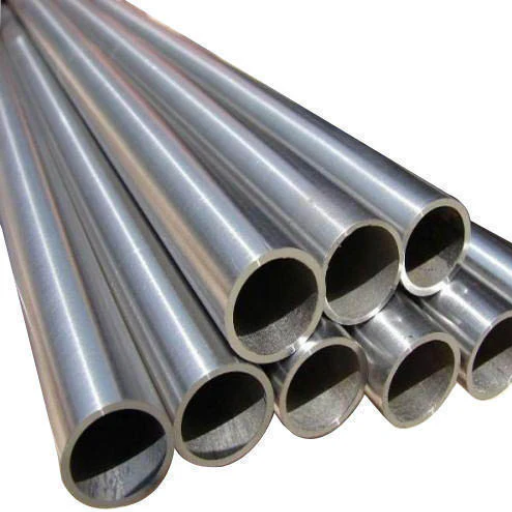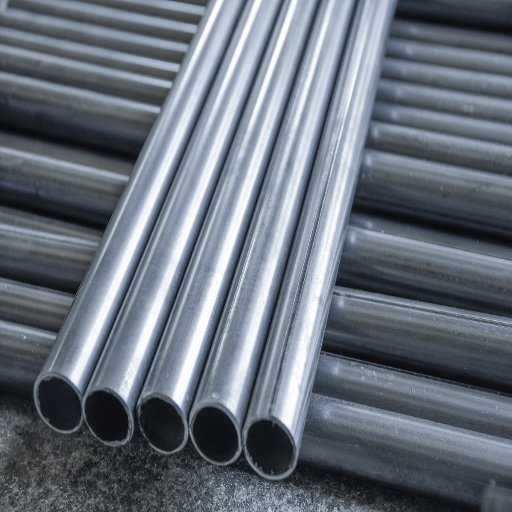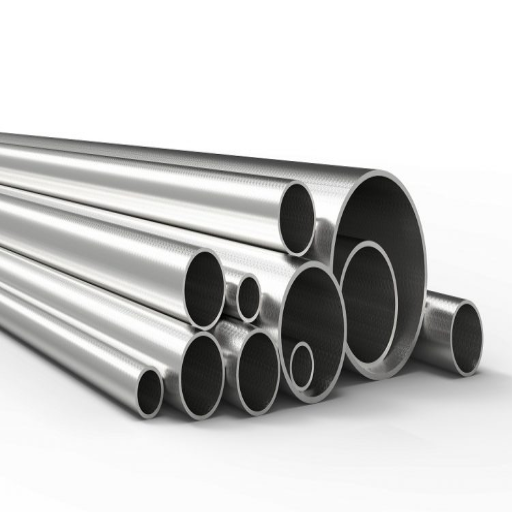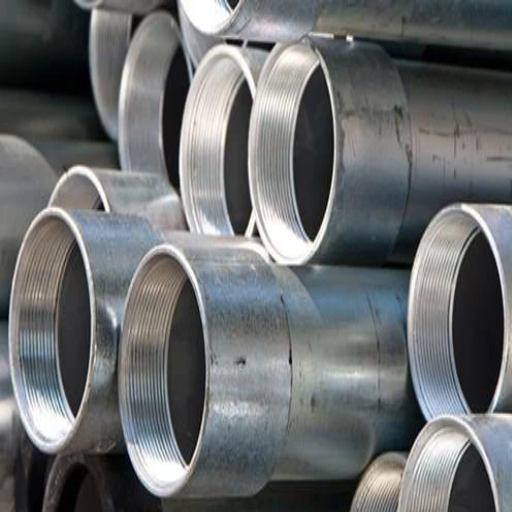In services with advanced engineering activities like constructing resilient frameworks, efficient plumbing, and extensible industrial applications, galvanized steel (GI) pipes best suit these needs. Why are they so advantageous, and why do people favor them in various industries? This article fills in the understanding of the different types of GI Pipes, their unique benefits, and applications where they shine the most. Whether you are a homeowner or an inquisitive individual, this article will aid you in enhancing your understanding of the role of GI pipes in modern infrastructure.
What is a GI Pipe?

GI pipe is colloquially short for galvanized iron pipe. It is a type of steel pipe coated in zinc to form a protective layer. This layer increases the durability of the pipe by preventing corrosion and rust. GI pipes are preferred for constructing water supply systems, plumbing, infrastructure projects, and other related industries. With their strength and resistance to environmental damage, they stand as the best option in residential and industrial premises.
GI Pipe Full Form and Definition
The complete form of GI pipe is Galvanized Iron Pipe. Galvanization is the process of coating a steel or iron material with zinc to prevent it from rusting and corroding. GI pipes are produced by hot dip galvanization, whereby the base metal is immersed in molten zinc, which forms a strong, corrosion-resistant outer sheath.
These pipes come in various sizes and diameters, making them ideal for a wide array of applications. According to recent specifications, GI pipes are defined according to their thickness as light, medium, and heavy-grade pipes. For instance, a common medium-grade GI pipe could range from 15mm to 150mm in diameter, depending on the use.
Common Uses of GI Pipes
Galvanized Iron (GI) pipes are widely utilized for their reliability, resistance against corrosion, and adaptability across multiple industries. Below are some of the most common applications.
- Water Supply Systems
GI pipes are versatile for industrial, residential, or commercial plumbing. Recent records show the use and consumption of these pipes in plumbing systems because of their resistance to rust and high water pressure. It is estimated that these medium-grade GI pipes last, on average, 20 to 50 years, contingent upon maintenance and environmental factors.
- Agriculture and Irrigation
GI pipes have enabled farmers to effectively irrigate immense land in less time, which is one of their many advantages. Cost-effective and reliable under varying conditions, these pipes are a must for modern farming.
- Construction Industry
During a construction project, these pipes are routinely used in the scaffolding and structure framework on account of their hardness, extensive load-bearing capacity, versatility, and economical properties. Heavy-grade GI pipes are the first choice of engineers in large-scale endeavors to guarantee the durability and strength of structures. About 30% of the over 30% of scaffolding systems globally adopt GI pipes.
- Fire Protection Systems
Due to their high-pressure handling and corrosion resistance, the widespread use of GI pipes is justified for conveyance in fire sprinkler systems. Studies show that GI pipes are used in compliance with fire safety regulations in both residential and commercial buildings.
- Telecommunications and Electrical Applications
GI pipes are used to enclose and shield electric and communication cables. They do not corrode, making them appropriate for indoor and outdoor sites. They protect vital infrastructure for a long time.
- Gas Distribution
GI pipes are essential for distributing natural or pressurized gases in different industries. Their strength contributes to safe distribution and minimum leakage, hence suitable for gas pipelines.
The listed applications illustrate the importance of GI pipes in modern infrastructure, agriculture, and industrial sectors, further highlighting the global need for such pipes.
How Does GI Pipe Compare to Other Types of Pipes?

GI pipes or galvanized iron pipes are cost-effective solutions for transporting fluids. GI pipes offer high strength and work well for gas and water transport. However, while they work well under high pressure and cost less than other materials, they are also much heavier. In acidic and saline solutions, corrosion is much more likely than in stainless steel pipes with higher resistance, but also comes at a greater cost. Copper pipes offer advantages with their thermal conductivity, but they are ideal for large-scale copper GI projects. Overall, pipes provide a greater balance to the cost, along with maintaining a GI pipe’s strength, performance, and durability.
GI Pipe vs MS Pipe: Key Differences
The composition, resistance to corrosion, weight, and application of pipes differentiate GI (Galvanized Iron) and MS (Mild Steel) pipes.
|
Parameter |
GI Pipe |
MS Pipe |
|---|---|---|
|
Material |
Zinc-coated steel |
Mild carbon steel |
|
Corrosion |
High resistance |
Prone, needs coating |
|
Weight |
Lightweight |
Heavier |
|
Durability |
Moderate |
High |
|
Cost |
Higher |
Lower |
|
Uses |
Water, plumbing |
Structural, HVAC |
GI Pipe vs Iron Pipe: What’s the Difference?
The alloys of iron differ, as do their applications, coating, durability, and resistance to corrosion.
|
Parameter |
GI Pipe |
Iron Pipe |
|---|---|---|
|
Coating |
Zinc layer |
No coating |
|
Corrosion |
High resistance |
Prone to rust |
|
Durability |
Long-lasting |
Moderate |
|
Cost |
Higher |
Lower |
|
Uses |
Water, outdoor |
Gas, indoor |
What are the Benefits of Using GI Pipes?

GI pipes provide several advantages that make them a preferred choice in various applications:
- Corrosion Resistance: Galvanized pipes can survive rust and corrosion because of the protective galvanization coat; this is particularly important in wet or humid areas submerged in water.
- Durability: Strong, physically sturdy, and stress withstanding: these properties make GI pipes useful for residential and industrial structures.
- Cost-Effective: GI pipes are a cost-effective solution for projects, especially large-scale ones, where performance at a good cost is required.
- Low Maintenance: Due to weathering and damage resistance done to GI pipes, less frequent replacements or repairs are required.
- Versatility: These pipes are useful in plumbing, water supply, fencing, and structural applications.
The above characteristics make GI pipes a screwdriver for construction and engineering projects requiring a reliable and practical solution.
Corrosion Resistance and Durability of GI Pipes
GI Pipes, or Galvanized Iron pipes, are popular across various industries primarily due to their resistance to corrosion and outstanding durability. These properties are then attached to the protective zinc coating, which prevents oxygen and moisture from contacting the iron or steel underneath. This protective coat prevents rust in various pipes and prolongs the life expectancy of the pipes even amid difficult surroundings. Recent statistics suggest that residential and commercial applications of GI pipes under appropriate conditions tend to last for an estimated 25 – 50 years. However, their longevity can be influenced by soil conditions, water quality, and exposure to humidity. Inspections and maintenance can improve the performance of these pipes over extensive periods.
Cost-Effectiveness of GI Pipes in Construction Projects
Construction projects cost a lot, and GI pipes (Galvanized Iron pipes) help save money. Recent data suggests that these pipes help cut costs with their adequate balance of affordability and strength. Supporting both small and large-scale infrastructure projects, it is obvious why GI pipes are so popular. Besides having a better initial cost than copper or stainless steel, GI pipes also have lower maintenance costs in the long run as they are low-maintenance.
Also, the pipes’ versatility is tremendous, as they assist in water supply, structural support, and even irrigation. Research also identifies that with the right conditions, the zinc coating on the pipes helps stop corrosion and wear and tear, which allows construction projects to stay under budget. With all the versatility, strength, and excellent maintenance of the pipes, it is no surprise that GI pipes have become such a staple in modern construction.
Strength and Resistance to Rust
Zinc coating is used to galvanize iron(GI) pipes, making them remarkably rust-resistant. Recent studies suggest that the zinc layer acts as a sacrificial barrier, shielding the metal underneath from moisture and oxygen, which causes corrosion. GI pipes seem to be a construction material of choice because they require minimal maintenance and are long-lasting. Search trend data suggests an increasing interest in sustainable construction materials. GI pipes prevent iron rusting in humid and saline conditions, reinforcing their structural stability while increasing their longevity, which is indispensable for infrastructure development.
What is the Process of Galvanization in GI Pipes?

If protecting pipes from corrosion and rust is the issue, the most sought-after solution is Galvanization. This is done by coating steel or iron pipes with a layer of zinc, primarily through hot-dip galvanization, which involves dipping the pipes in molten zinc. The created zinc coating forms a protective barrier encapsulating the pipes, binding moisture and other environmental elements. This process guarantees that the pipes will remain durable, corrosion-resistant, and useful over a long period, even in harsh conditions.
How Galvanization Works: The Role of Zinc Coating
Zinc is known to provide better protection for the surfaces of metals than other materials’ physical and chemical properties. Zinc-coated (galvanized) steel and iron pipes do not get corroded in water or air because zinc forms a bond with the steel and prevents corrosion in the uncovered region, while the bare metal is unblemished. During the hot-dip galvanization, die bonds are made sharper through the interface alloy of zinc and metal into which they are dipped. An immensely strengthened alloy layer is formed, which is very tough to crack, abrasive erosion, impact abrasion, etc.
The natural characteristic of zinc, which creates a layer of zinc oxide in the presence of airflow, also plays a significant role as a shield. This oxide barrier, with the capability to transform into zinc carbonate, adds a layer of defense against moisture and oxygen, which contribute to the rusting of materials. Progress in metal galvanization increases its durability, providing it uniform thickness and making sure the entire region is covered. This step proves that galvanization is a remarkable way to maintain the forge in shape and maximize its use.
Benefits of Molten Zinc in Coating GI Pipes
Molten zinc’s role in galvanizing GI (galvanized iron) pipes is crucial. Molten zinc brings five key benefits to galvanized iron pipes.
- Corrosion Resistance
Due to its protective coating, zinc prevents corrosion from damaging processes associated with water, air, or chemicals. Studies have shown that galvanized pipes with a molten zinc coating tend to last up to 50 years in rural locations and 20 to 25 years in metropolitan or industrial locations.
- Self-Healing Properties
Zinc’s bond with steel’s surface is metallurgically constructed so tightly that it becomes impossible to remove, even with scratches and bruises. Steel will always remain covered even if the protective coating sustains some scratches because Zinc provides cathodic defense, shielding it from rust.
- Uniform Coating Thickness
The pipe’s threads and edges, which are particularly difficult to access, are coated uniformly with molten zinc. This durability improves and strengthens the pipe’s resistance to wear.
- Low Maintenance Costs
Molten zinc-coated pipes require virtually no maintenance throughout their lifespan. These factors make Zinc plating far more appealing for industrial and infrastructure usage.
- Environmentally Friendly Solutions
Zinc can be recycled, and the galvanization process creates little waste. Moreover, coated pipes are less prone to breakage, which decreases the need to replace them frequently, thus reinforcing their sustainability. Evidence shows that more than thirty percent of the zinc used around the world is from recycled materials.
Reference Sources
1. “Seismic Fragility Evaluation for Main Steam Line of Seismically Isolated APR1400 NPP”(Jeon et al., 2022)
- Published in 2022
- This study performed seismic fragility analysis on the main steam piping of an isolated APR1400 nuclear power plant. The failure mode was defined as cracks causing leakage.
- The study quantified the leak-through crack point as a damage index and developed seismic fragility curves based on peak ground acceleration and relative displacement between isolated and non-isolated buildings.
2. “Seismic Fragility Evaluation of Main Steam Piping of Isolated APR1400 NPP Considering the Actual Failure Mode”(Jeon et al., 2022)
- Published in 2022
- This study evaluated the seismic fragility of the main steam piping in an isolated APR1400 nuclear power plant, considering the actual failure mode of leakage-causing cracks.
- Experimental and numerical analyses were used to quantify the leak-through crack point as the damage index. Seismic fragility curves were developed based on peak ground acceleration and relative displacement between isolated and non-isolated buildings.
3. “Performance Analysis of Detecting buried pipelines in GPR images using Faster R-CNN”(Ko & Nam-Kim, 2019, pp. 21–26)
- Published in 2019
- This study proposed a method to detect buried pipes using ground-penetrating radar (GPR) images and a Faster R-CNN deep learning model.
- Experiments were conducted on raw GPR data sets and data sets with augmentation to increase the number of images, demonstrating the effectiveness of the proposed approach.
Frequently Asked Questions (FAQs)
Q: What is the primary difference between galvanized and iron pipes?
A: The primary difference between galvanized iron pipe and iron pipe lies in galvanization. Galvanized iron pipes are coated with a layer of zinc to enhance their corrosion resistance. In contrast, non-galvanized iron pipes do not have this protective coating, leading to a shorter service life.
Q: How does galvanization affect the service life of a galvanized iron pipe?
A: Galvanization significantly increases the service life of a galvanized iron pipe by providing superior corrosion resistance. This protective layer prevents rust and degradation, making galvanized pipes ideal for water and other applications.
Q: Are galvanized pipes suitable for outdoor use?
A: Yes, galvanized pipes are suitable for outdoor use due to their galvanization, which offers a strong resistance to environmental factors that can cause rust and corrosion. This makes them a popular choice for various outdoor plumbing applications.
Q: What are the advantages of using steel gi pipes compared to other types of pipes?
A: Steel gi pipes offer several advantages, including lightweight construction, ease of installation, and strong resistance to corrosion thanks to their galvanized coating. This makes them ideal for both residential and industrial use.
Q: Can I weld galvanized iron pipes, and if so, what should I consider?
A: Yes, you can weld galvanized iron pipes, but you must consider that welding can burn off the galvanized coating, which may expose the underlying steel to corrosion. It’s advisable to re-galvanize the welded area to maintain its corrosion resistance.
Q: What are the typical applications of GI pipes?
A: GI pipes are widely used in various applications, including water supply lines, plumbing systems, and structural frameworks, due to their strength, lightweight nature, and corrosion resistance.
Q: How do GP pipes differ from GI pipes?
A: GP or galvanized pipes are specifically designed to resist corrosion and are often used for water transport. In contrast, GI pipes refer to galvanized iron pipes that may also include other types of galvanization. Both offer corrosion resistance, but their compositions and applications may vary.
Q: What materials are GI pipes made of?
A: Gi pipes are typically made from low-carbon steel, which is then coated with zinc through the galvanization process. This combination provides strength and resistance to corrosion, making them suitable for a wide range of applications.
Q: Are there different grades of galvanized iron pipes?
A: There are different galvanized iron pipes grades based on their carbon content and manufacturing process. These grades can affect their strength, weight, and suitability for various applications, including plumbing and construction.




